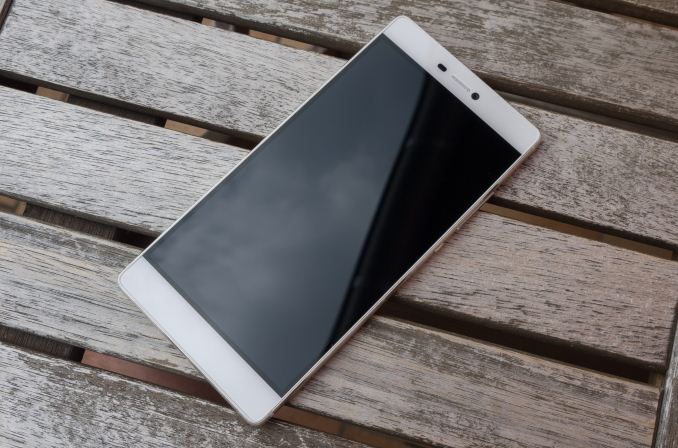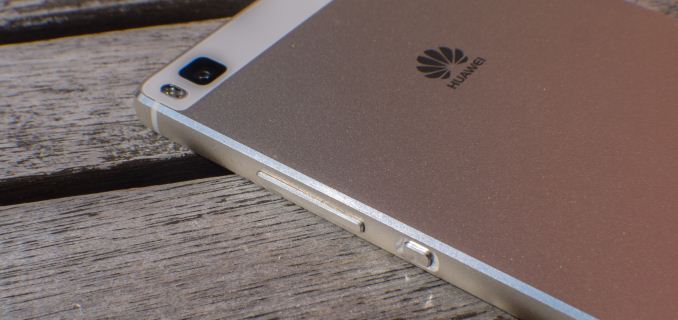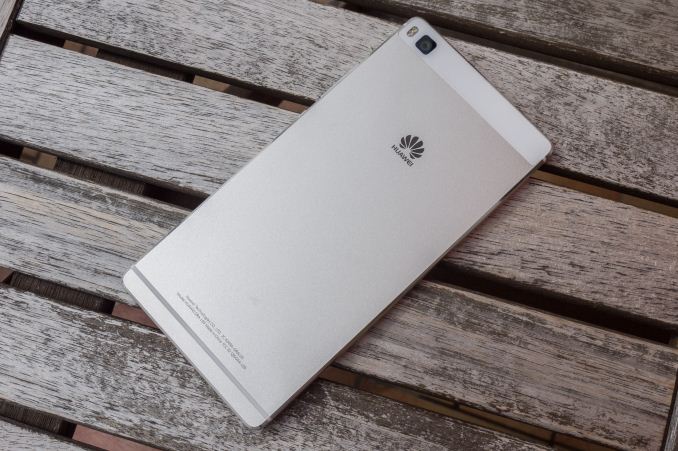The Huawei P8 Review
by Andrei Frumusanu on June 4, 2015 8:00 AM EST- Posted in
- Smartphones
- Huawei
- Mobile
- P8
- Kirin 930
Conclusion & Final Remarks
Huawei has been over the past few years trying hard to position itself among the top Android device vendors. Starting with the Mate 7 we saw the company direct itself in trying to produce more high-quality devices that try to cater to the more expensive premium segment in a bid to distance itself from some of the more notorious characteristics of Chinese-designed phones. The P8 does well here as it addresses some of the major flaws of its predecessors.
Design-wise, the P8 remains a top-notch contender as the unibody build feels both solid and is comfortable to use. I'm honestly struggling to find any major objective faults with the device that would make me say that it might be problematic in every-day usage. I just hope that the P8's metal back and new finish is more scratch resistant than the Mate 7's, as my unit already exhibits quite a few battle scars on the smooth metal finish.
The screen of the P8 also has its strengths - I really hope that Huawei keeps a discrete user setting that acts as a calibrated accurate display profile, as it was a pleasant surprise to see the P8 exceed our expectations in that metric. The 5.2" size remains manageable, and with a resolution of 1080P the P8 doesn't try to compete in the resolution race. While I'm not sure if my unit was a one-off case or if it's a common production problem, it's imperative that Huawei tries to improve its quality control for displays. The extensive backlight bleed I had on one corner of my review unit is certainly severe enough to try to get a replacement unit under warranty.
One of the major flaws of the last few Huawei devices was their use of in-house Kirin SoCs: I regard the Kirin 920 as quite of an embarassement in terms of power efficiency and a major Achilles' Heel in terms of battery life for whenever one would run CPU-intenstive tasks such as website rendering / extensive browsing. The Kirin 930 keeps itself limited to less powerful A53 cores more out of pure necessity rather than concious choice. This, together with an actual smart thermal budget mechanism in the form of ARM's IPA prevents the P8 from ending up with the same melt-down scenarios we experienced on the Mate 7. While the Kirin 930 makes the CPU "good enough", that's about as much positive as there is to say about the chipset, as it still remains a relatively inefficient SoC with one of the worst GPU performances we've enountered this generation. I've said this in the Mate 7 review and I will keep being frank with the P8 as well: This would have been a much better phone had Huawei chosen to employ a third-party SoC such as from Qualcomm, MediaTek or Samsung.
While the P8's 2680mAh battery manages to deliver acceptable to average lifetime, one has to consider that the Huawei pays the performance price to reach those numbers. As such, one can't really consider the P8 an efficient device as the performance per Watt is below other devices. There's also the fact that the promised fast-charging capability just never materialized, and the P8 exhibited itself as one of the slowest charging phones out there even though it has a smaller battery capacity.
The second major flaw that was addressed in the P8 is the camera performance. The inclusion of a new innovative camera sensor and OIS, all powered by a dedicated external ISP makes P8 leaps and bounds more capable than what we saw in the Mate 7 - there's no contest as Huawei delivered substantial improvements in picture quality. While in daylight, the P8 still couldn't quite match top performers such as the Galaxy S6 and equivalent, it's in the low-light scenarios where the new Sony IMX278 RGBW sensor is able to shine. I'm still holding off declaring this the best low-light shooter available before we publish our LG G4 review, but the P8 was able to consistently outperform the previous record-holder, the Galaxy S6.
It's just a pity that while we can now consider Huawei among the vendors with top-performing camera hardware, that we also see it being held back by a hard to use software interface that, while acceptable for previous models, is no longer worthy of such a high-end shooter. I hope that Huawei (And every other vendor for that matter) is paying close attention to the competition when it comes the camera application, as over the last few months we've seen the bar being raised to new heights on more than one occasion.
While we're still talking about hardware, it's just baffling to see Huawei implement such bad WiFi connectivity for the third time in a row. Not only does the P8 yet again disappoint in WiFi reception and speeds, it actually even sees a downgrade capability by dropping support for the 5GHz band. For people who live in areas crowded 2.4GHz spectrum, this can be extremely worrisome as connectivity will undoubtedly suffer.
On the software side, other than a few kinks such as the subjectively unintuitive multi-task menu or the nagging power consumption notifications, there's little to critique EmotionUI 3.1. I had big praises for EmUI on the Mate 7, and while the P8 removed one of those core elements (Per-app permission manager) that made it so notable, it remains an extremely solid OEM modification of Android. Design-wise, Huawei even improved on it as we see a return of more colourful icons throughout the OS which give the interface a rather pleasing and clean look.
Yet again we find ourself at the end of the review with probably the most important question of them all: Is the P8 worth buying? At official MSRPs of 499€ and 599€ for respectively the 16GB and 64GB versions, I'd say no. The P8 just seems to have too many compromises to be able to be considered as a viable alternative to other devices at that price range. While the camera is the phone's truly outstanding feature, the whole device as a package just seems to underperform on too many other areas to be able to justify a purchase. Buying last year's flagship devices from vendors such as LG, HTC and Samsung can already be a lot cheaper than getting the P8, and one will probably end up with a better device than what Huawei managed to offer this generation.
Nevertheless, one has to acknowledge that Huawei managed to make huge strides with the P8. It's clear that the company is trying to improve its weaknesses one at a time, as we saw the use of a much more reasonable SoC, better NAND performance, and a great camera on the P8. I just hope that in future models Huawei addresses faults with the WiFi connectivity, and maybe with help of a 16nm manufacturing process, manages to employ a Kirin SoC that is truly competitive both in performance and efficiency. That would be a truly interesting device to review!













104 Comments
View All Comments
Taneli - Thursday, June 4, 2015 - link
Another iPhone clone from Asianiva - Thursday, June 4, 2015 - link
How is this thing an iPhone clone?der - Thursday, June 4, 2015 - link
Design Profile, Camera UI, yada yada yadaEthos Evoss - Friday, June 12, 2015 - link
another asholeshaolin95 - Tuesday, September 15, 2015 - link
bingo! lol Taneli you are such a loserrandom2 - Sunday, June 7, 2015 - link
All phones are iPhone clones. Don't you know anything? :)Ammaross - Monday, June 8, 2015 - link
At least that's what Apple's lawsuits have claimed....Ethos Evoss - Friday, June 12, 2015 - link
nothingEthos Evoss - Friday, June 12, 2015 - link
no iphone copied sony ...http://www.dailytech.com/Samsung+Apples+iPhone+Sta...Refuge - Friday, June 12, 2015 - link
it is also a rectangle? Didn't they have a patent on that at one time? lol